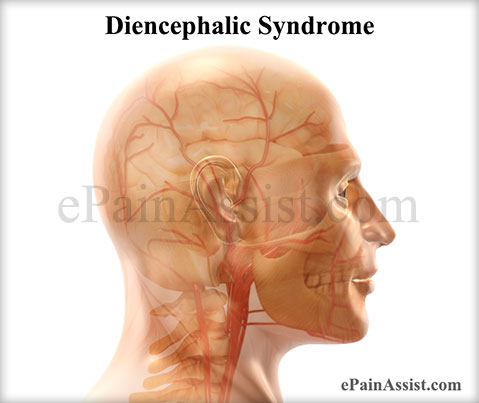What is Diencephalic Syndrome?
Diencephalic Syndrome is a rare pathological condition in which there is development of a tumor in the brain just above the brainstem. This particular part of the brain where the tumor develops is called as diencephalon and has within it the hypothalamus and the thalamus. This is normally found in infants and young children who will exhibit certain classical symptoms of this disorder to include failure to thrive, poor weight gain, and being extremely weak in general compared to other healthier children. They may also exhibit symptoms like frequent episodes of vomiting and persistent headaches along with vision problems. If Diencephalic Syndrome is left untreated then it may lead to potentially dangerous complications. Diencephalic Syndrome is primarily treated with surgery, radiation, and at times even chemotherapy.
What are the Causes of Diencephalic Syndrome?
As stated, Diencephalic Syndrome is caused as a result of development of a tumor just above the brainstem where the thalamus and hypothalamus is present. The function of the hypothalamus is to regulate sleep, hunger, thirst, and control the body temperature. The most common tumor associated with Diencephalic Syndrome is a glioma or an astrocytoma. Glioma is a tumor that arises from the glial tissues. Astrocytoma associated with Diencephalic Syndrome tends to be more aggressive and develops much earlier. Apart from these two tumor types, certain tumor types like ependymoma or dysgerminoma are also known to be associated with Diencephalic Syndrome.
What are the Symptoms of Diencephalic Syndrome?
The symptoms of Diencephalic Syndrome usually begin in infancy where the child will exhibit the following symptoms:
- Have very poor weight.
- Inability to gain weight despite adequate nourishment is one of the symptoms of Diencephalic Syndrome.
- Being extremely thin.
- Complain of persistent headaches.
- Having trouble seeing things.
- The child with Diencephalic Syndrome will show symptoms of being always restless and overactive.
- Presence of nystagmus.
- Frequent episodes of vomiting
- Rarely, the child may develop hydrocephalus, hypoglycemia, or hypertension.
How is Diencephalic Syndrome Diagnosed?
If Diencephalic Syndrome is suspected due to the clinical symptoms exhibited by the child, an MRI with gadolinium is obtained of the brain and spine which may detect the presence of the tumor. A CSF analysis may also be performed. A detailed ophthalmologic examination will also be performed to look at some abnormalities in the vision of the affected child. All the above tests will virtually confirm the diagnosis of Diencephalic Syndrome.
How is Diencephalic Syndrome Treated?
As the tumor in Diencephalic Syndrome cannot be completely removed due to its location the main aim of treatment is to reduce the size of the tumor. This can be done both conservatively as well as surgically. This will also be followed by chemotherapy to stop the progression of the tumor. Extremely thin patients may be given food through an NG tube while undergoing treatment. Once the treatment is done and over with the patient will need regular neurological, oncologic, and ophthalmologic follow ups through the life to look at the size of the tumor and also check if any complications may have developed post treatment.
Prognosis & Survival Rate of Diencephalic Syndrome
Prognosis for patients with Diencephalic Syndrome is guarded and relatively poor when compared to people who have similar tumor but do not have Diencephalic Syndrome. In majority of the cases, these tumors continue to grow despite all forms of treatment. The survival rate of untreated patients with Diencephalic Syndrome is less than 12 months after development of the tumor, but with prompt treatment, judicious follow ups, and adhering to the treatment recommendations made by the team of physicians, the prognosis becomes extremely good for a healthier life even after the diagnosis of Diencephalic Syndrome.
- Journal of Neuro-Oncology: Article: “Treatment and survival of low-grade gliomas in children: a population-based study.” DOI: 10.1007/s11060-021-03802-6
- Journal of Neurosurgery: Article: “Symptoms and signs of intracranial tumors in infancy.” DOI: 10.3171/2021.5.PEDS2154
- Pediatric Blood & Cancer: Article: “Neuro-Oncology at the Infancy Period: Diagnosis and Treatment Challenges.” DOI: 10.1002/pbc.28797
- Cancer Cell International: Article: “Intramedullary high-grade gliomas: MR and clinical features in 15 cases.” DOI: 10.1186/s12935-020-01548-y

